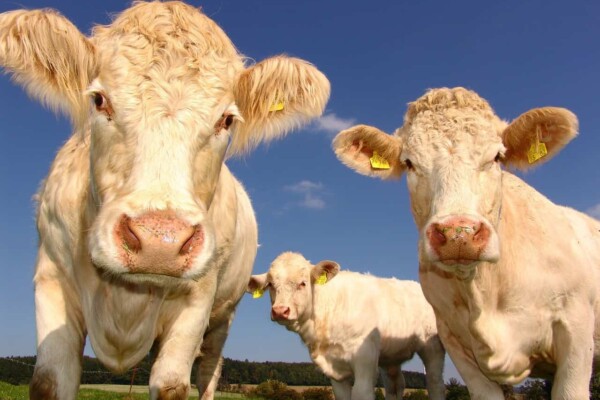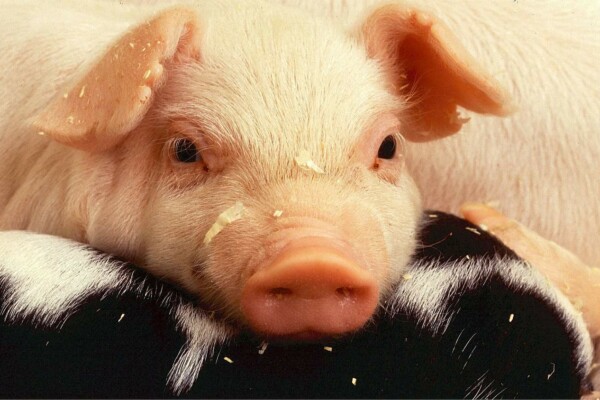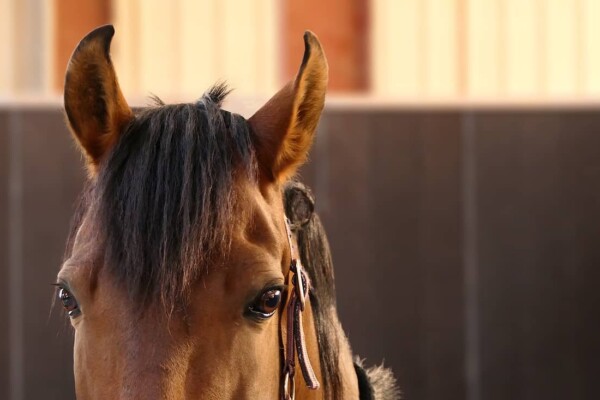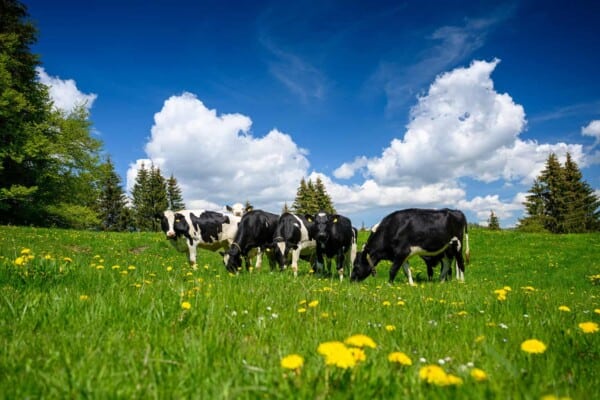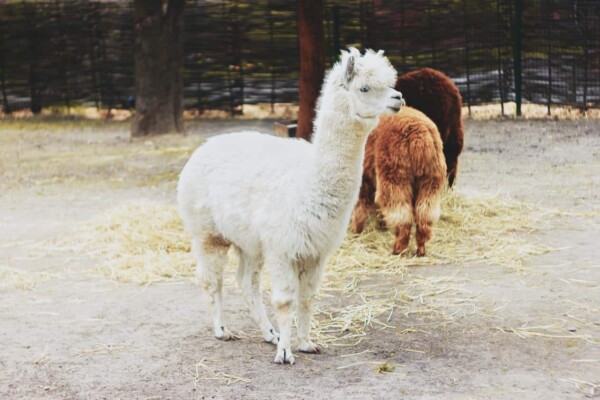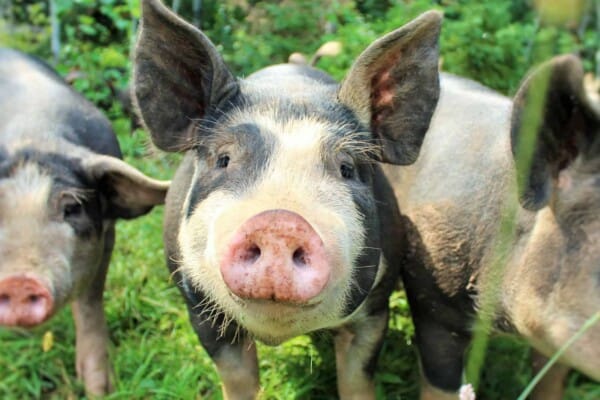In the wilderness there are plenty of ways to establish your dominance. Whether that is through your stature, the color of your skin or the massive and intricate size of your horns, the truth is that in the deepest parts of the jungle there are no better ways to present yourself than that.
This is why for today we decided to bring you our very own rendition of a guide on horns and specifically the best horns out there.
How can we rate than and how will we rank them? Well, first off, we will obviously be going for uniqueness and mass, meaning that if a creature has a massive pair of horns, they do have a chance of being featured here but if they are relatively small and yet they have incredibly cool horns they can still make it here.
With that being said, before we get into the best of the best, how about we have a little segment here during which we talk about the main questions most people have about horns as we try to get more familiar with these majestic things.
So, how about we start this off with one of the first questions that most people out there have asked themselves by now, aka:
What Are Horns Made Of?

If you ever asked yourself this question then chances are that you already found the answer but just in case you haven’t let’s bring you up to speed.
Essentially, most people online believe that they’re just a mean combo between the bone and the ivory but that’s not exactly true. In actuality, horns, or to be more precise “most horns” are made up of bone and hair follicles or keratin for short.
This is the same type of material as what you’d typically find in human fingernails, although they are a lot denser and tougher.
If you ever had the chance to touch horns in real life then you most likely immediately felt the fact that it was a lot more of a boney structure than a keratin one.
But, if you were to touch a pair of horns that have already far surpassed their peak, aka if you so happen to touch the horns of an elder animal then chances are that you could vaguely feel the keratin structure of it.
Do Females Have Horns?

For a lot of people online, the mere thought that the majestic horns could be laying atop the head of a female seems ridiculous but what they don’t realize is the fact that females have just as majestic if not even better-looking horns than their male counterparts.
Not only that but according to a recent study, it appears as though both males and females have horns for the same reason, this being the defending of their territory or fighting off competition without risking any real damage to themselves.
A biologist by the name of Ted Stankowich has stated that there are currently around 82 species of female bovids that sport horns so as we mentioned previously, the numbers don’t lie, female animals definitely have horns.
Why Do Animals Have Small Antlers or Straight Horns?
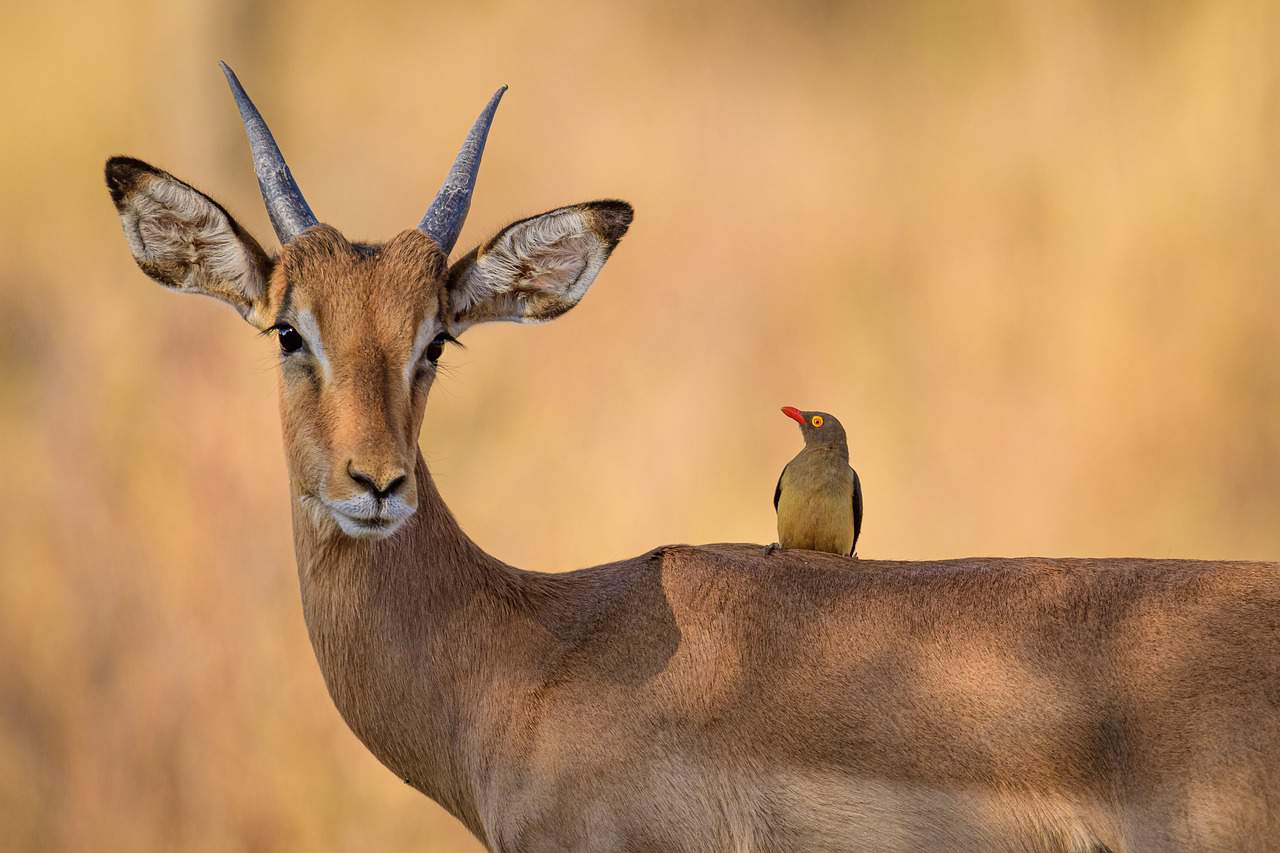
In the animal kingdom, for the most part it appears as though the animals really love sporting horns as large as possible for the sake of impressing a potential mate or to deter any competition from their hunting grounds.
But that doesn’t mean that there aren’t plenty of animals that choose to go for small antlers either. These animals choose to have smaller antlers from an evolutionary point of view because it helps them with the sparring without the prospect of death creeping up on them every time that they headbutt one another.
But that’s not all, some animals don’t necessarily go for small horns but instead they prefer to sport massive straight horns instead. Why? Well, take for example the Oryx.
The reason as to why they prefer to have them like that is because they want to defend themselves properly, immediately risking the potential death of their opponent from the moment that they plunge towards one another. It’s sad really, but hey, nature can be quite brutal.
Why Are Antlers and Horns Important?
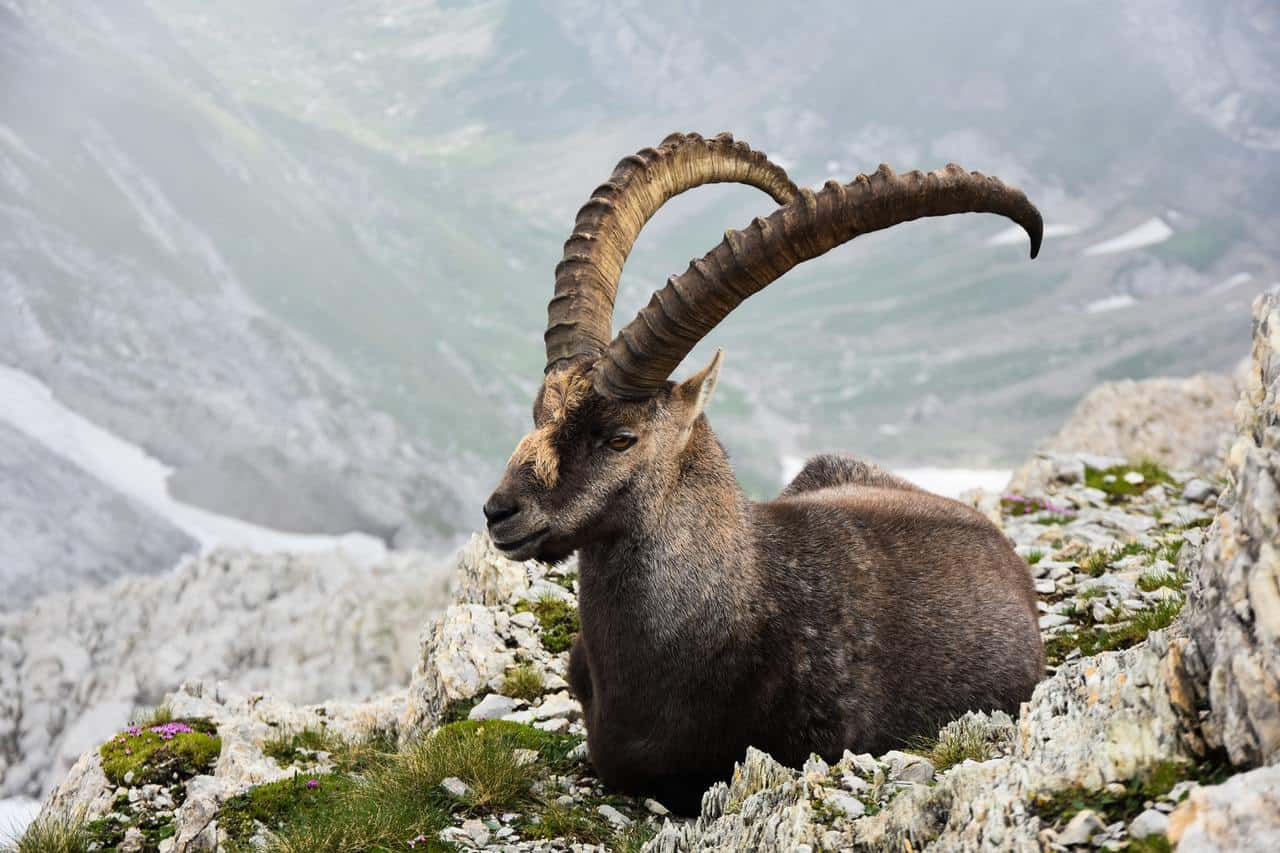
The fact of the matter is that for as great as we can be when it comes to our intellect, let’s be honest here, sometimes when we’re out in the wild we do have to use our brute strength to help us get through everything.
Well, these wild animals don’t have the luxury of just dialing back and not actively trying to run for their life at any moment during the day, so they have to rely heavily on what nature gifted them with both for their survival and for the chance of prolonging their lineage overall.
So, when we ask ourselves, are antlers and horns important, we should most definitely ask ourselves if these animals could live the same quality lifestyle without them. Well, would they? The answer is no, because at the end of the day these horns and antlers are literally saving their lives on the daily.
Without them these poor animals could very well be in danger at all times, imagine you going up against an enemy that’s ten times your size with a massive claymore swinging at you and you don’t even get a weapon of your own to defend yourself.
On the other hand, however, horns and antlers were also used for medicinal purposes a lot over the centuries which means that without them they would definitely be considered to be less of a target for humanity overall.
So, just as a little closing thought regarding antlers and horns and their eventual importance, are they worth keeping in the evolutionary spectrum? Most definitely. In a lot of the cases out there, they are all that the animal has at their disposal and without them they’d be even easier prey than they are now.
The Best Horns in the Wild
But alas, with that being said, we hope that we answered most of your questions or at the very least just the top of your list. So, for now, let’s jump into the very best antlers and horns in the wild, starting off with one of our personal favorites:
Saiga
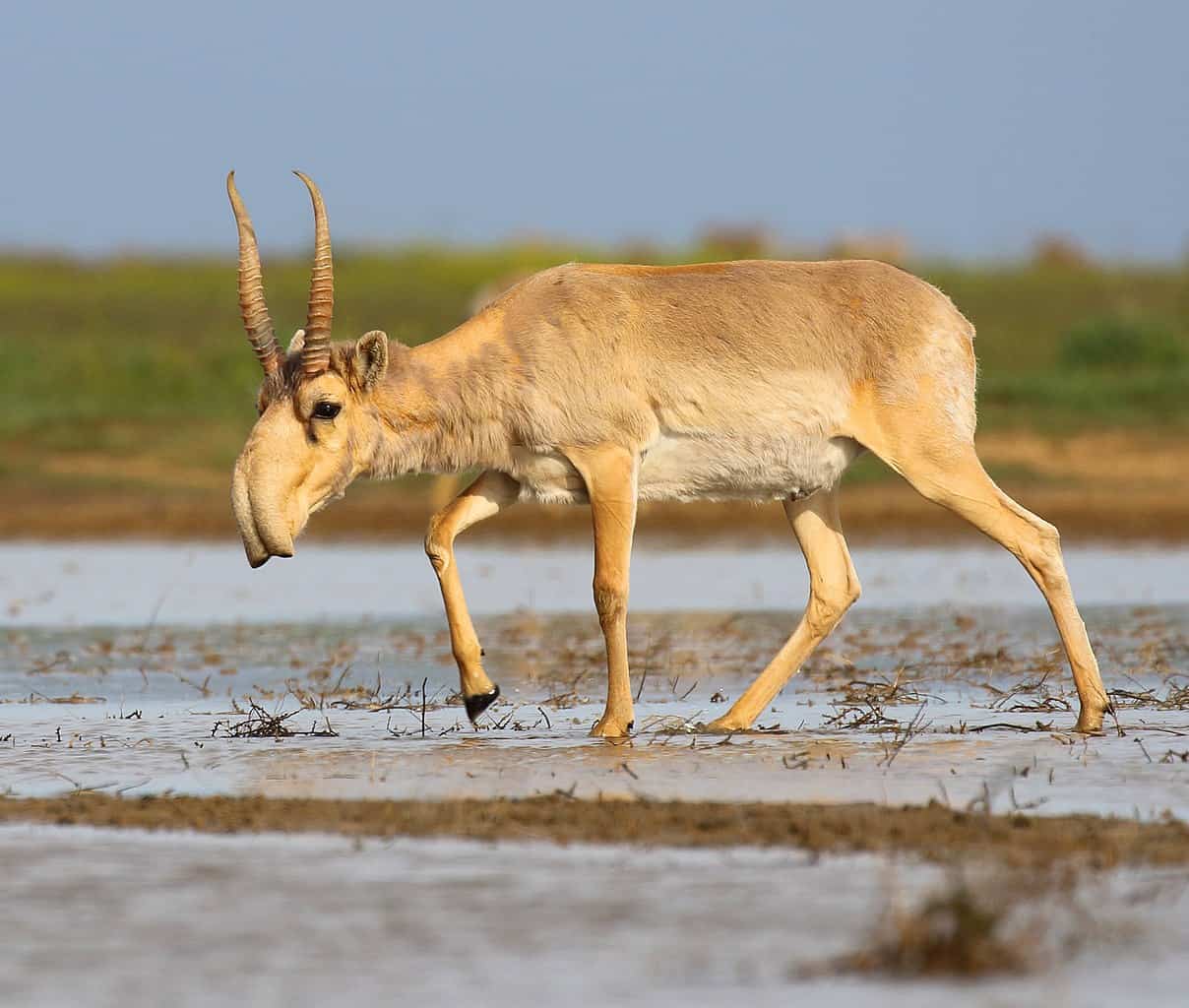
We absolutely could not forget about the Saiga antelope and its overall goofy look. Originally from Kazakhstan, Russia, the saiga is one of the strangest looking antelopes that you’ll ever get to look at.
It’s known for its strange shotgun-like nostril which is especially helpful when the winter comes. But alas, what we’re interested here is the horns and by God, just look at these beauties.
They are spiraled and on top of that they also look a tad pink with a hint of jade on them. Overall, they just look incredible to say the least.
Kudu
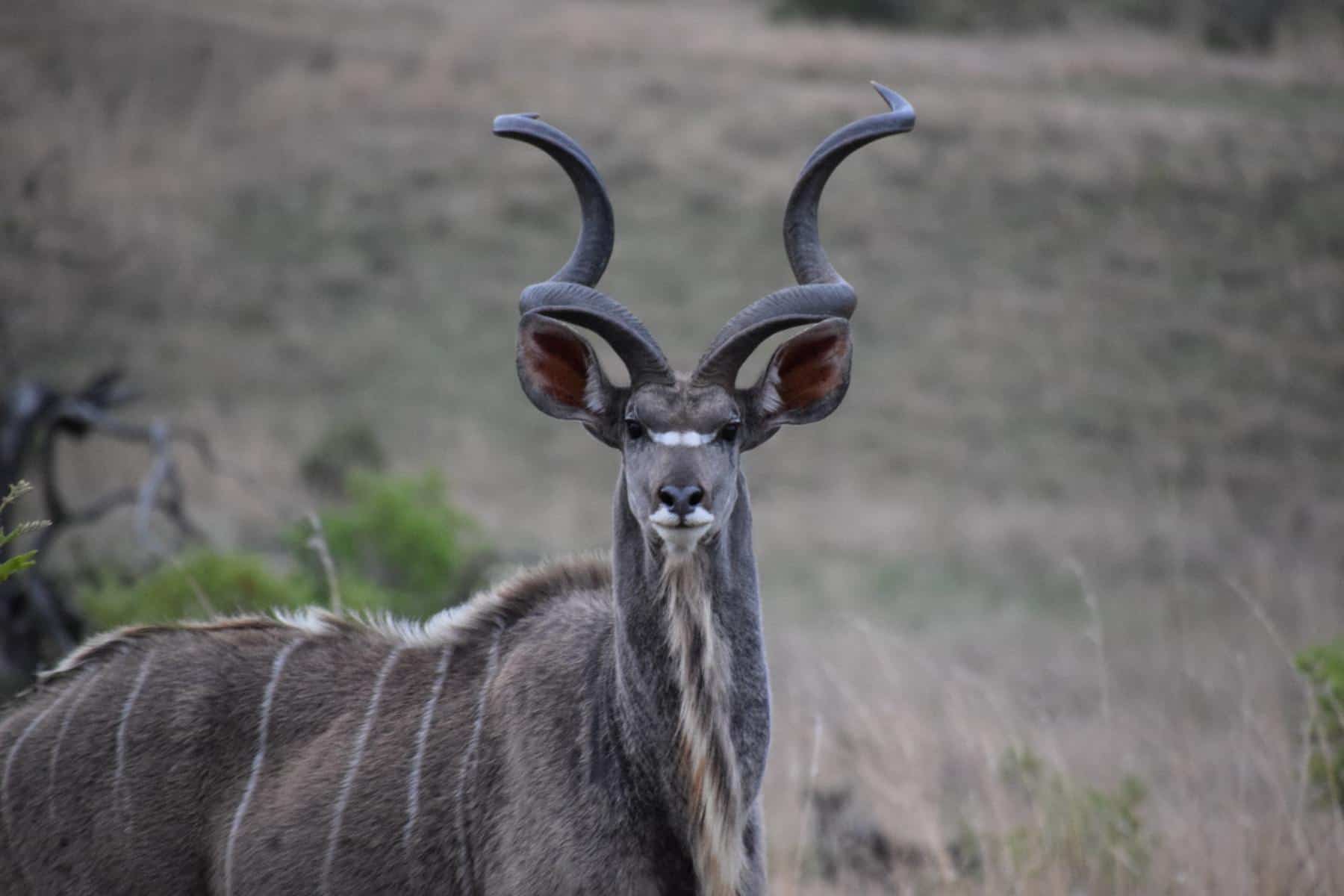
The Kudu really is a majestic looking creature and that’s a fact. Regardless of whether you’re looking at a baby Kudu or an elder, you already know that you’re looking at one of those incredible sightings that you can only get once in a lifetime.
The strange part about them is the fact that they have very long and intricate horn designs that spiral all around making for unique looks that you cannot replicate.
Jackson Chameleon
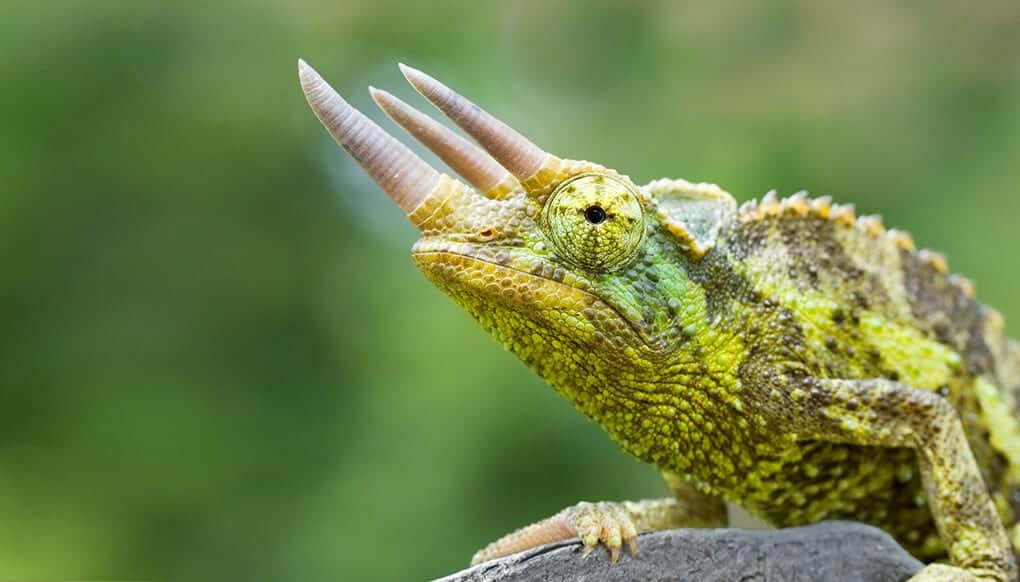
Yes, I know it’s strange to include this one here, but it surely deserves a mention. Originally from East Africa, this strange rendition of a chameleon can be found all across Hawaii nowadays as a result of how popular it was with buyers.
Essentially, these tiny and yet super intricate horns immediately caught the eyes of most people out there as everyone wanted to own one for themselves. As a result, they’re now all-around Hawaii and even in some places in Europe.
Their horns are arguably a lot bonier than most other animals on this list although their purpose is all the same: to ram their heads into other males during the breeding season.
Roan Antelope

When it comes to antelopes, there are plenty of amazing picks to choose from but let’s be honest here, the Roan Antelope may very well be the coolest looking one simply because of its horns alone.
On top of that, they’re also incredibly massive beasts, with the males being as heavy as 300kg or 661 pounds in total. They are known for their reddish color and most specifically for their all-black faces.
The horns however are just simply put gorgeous to look at, these are the types of horns that you can look at day and night and still be amazed at. The females have notably shorter horns than the males although the males also use them a lot more in combat.
Nubian Ibex

Whenever we even picture amazing horns on animals we most likely think of something like the Nubian Ibex’s horns. Even if you don’t even know the Nubian Ibex per se, if you just think of what incredibly majestic horns would look like on an animal you immediately think of what they’re sporting.
From a closer inspection you can instantly see why they’re so amazing. First off, they’re backward-curling making them some of the coolest looking horns out there. On top of that, they are very tough.
Imagine thrusting bone-like spears at your enemy and doing so continuously for a long time without them breaking. Yeah, that’s the kind of strength that we’re talking about right here.
Let’s not forget the fact that they’re also very massive creatures, so the horns just pretty much make them amongst the coolest looking wild animals out there.
Sable
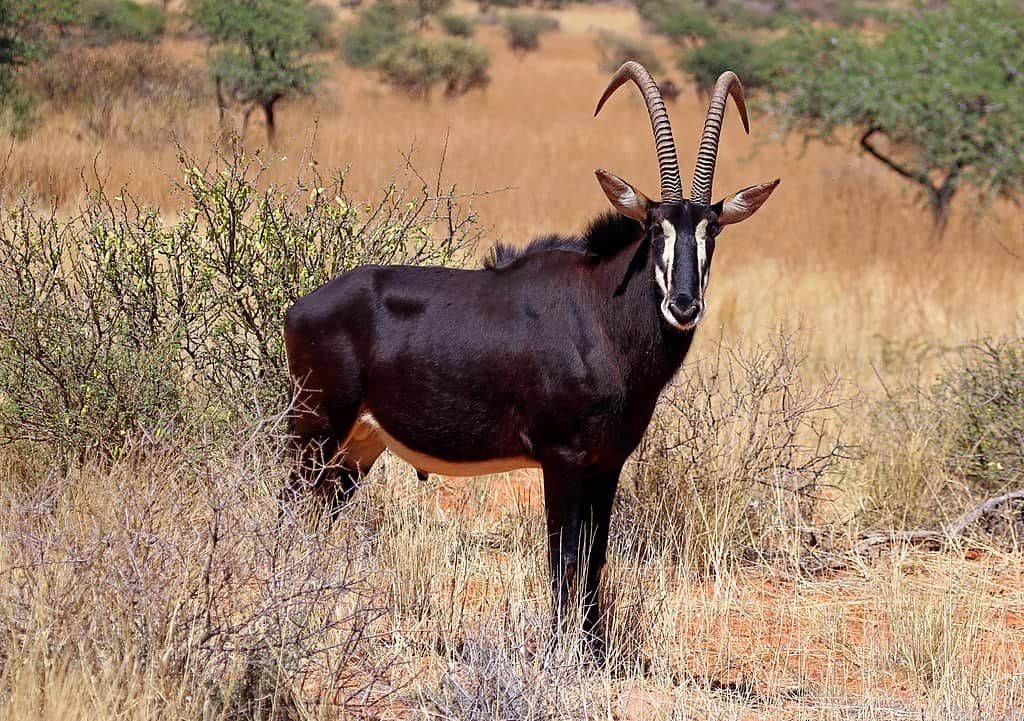
The Sable antelope is often times referred to as one of the proudest creatures in the animal kingdom. Why? Well obviously, it’s all thanks to those massive horns that they’re proudly wearing atop their heads.
On top of that their horns are also incredibly dangerous, unlike with most creatures on this list that rely on their sheer strength to damage the enemy, the Sable specifically has very pointy and even knifelike horns that they use to make sure that their opponent doesn’t survive a second thrust.
Their horns are as large as 154 centimeters in size, just picture someone thrusting 154cm knifes at you, that’s how intimidating they are.
Blackbuck
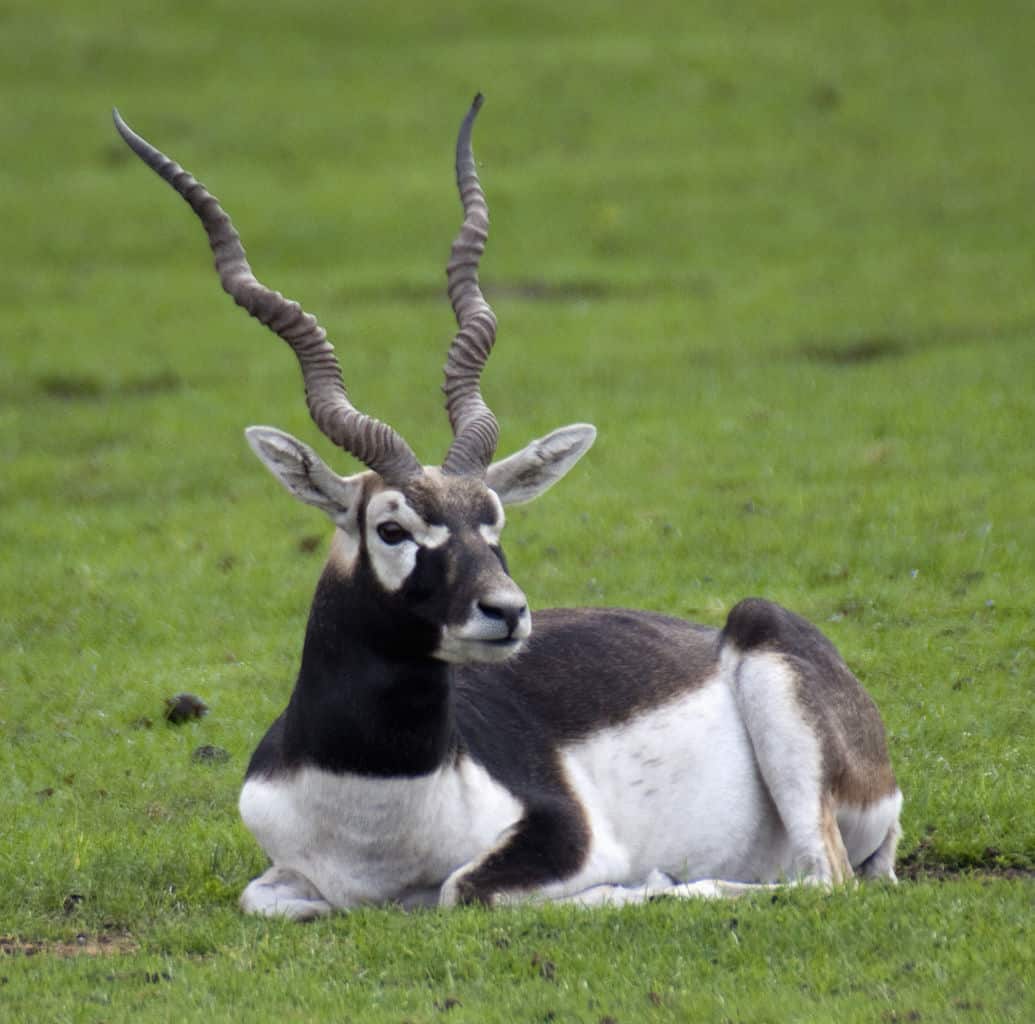
You will find this strange creature in India of all places, leaping across the wilderness without a care in the world thanks to those massive horns that they use to intimidate and even attack other creatures to preserve their personal space.
These are some of the prettiest and most funky looking horns we’ve ever laid our eyes on for sure, and you can immediately tell why they’re so sought after by collectors all around the globe.
Since they are endangered however, they can’t get their hands on them anymore. Still, just look at how beautiful and unique these are.
Markhor
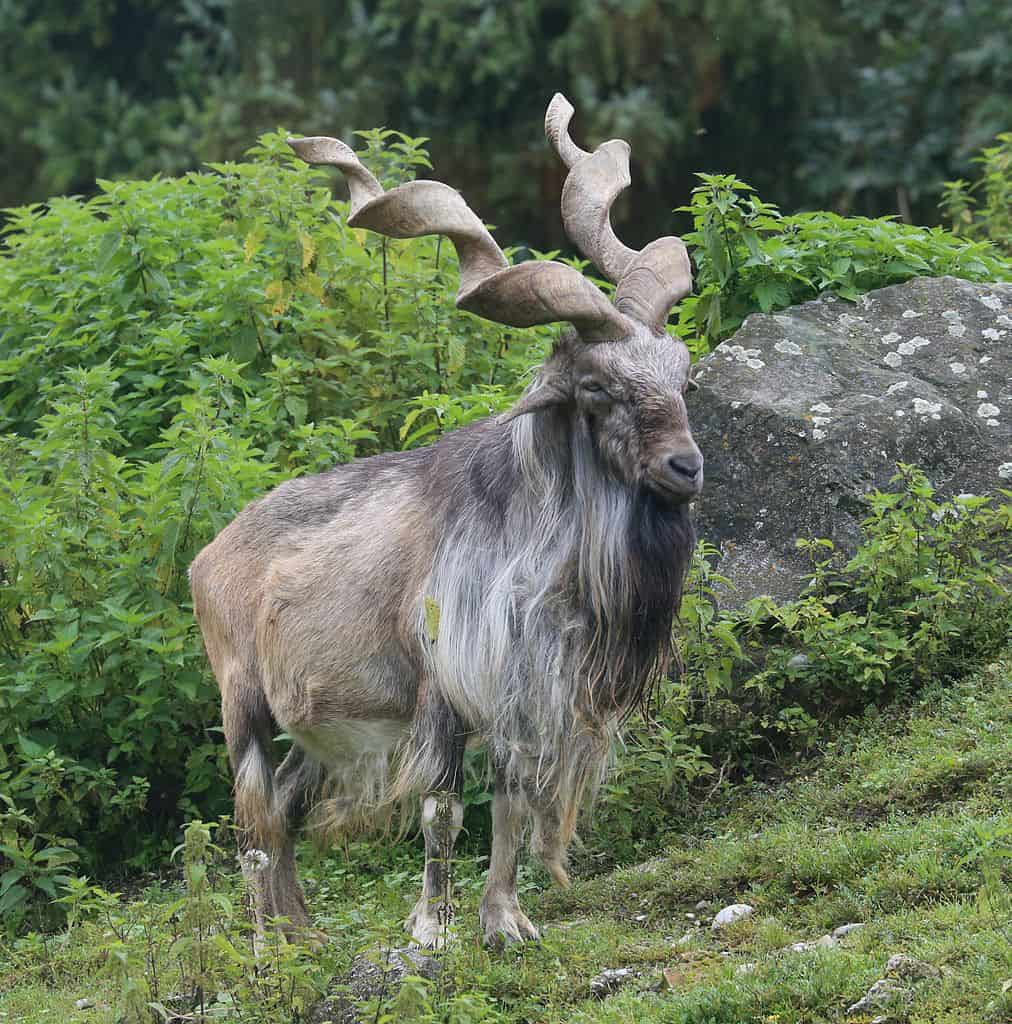
The Markhor is the type of creature that spends most of its time climbing across the incredibly scary rocks that most of us would pass out on the moment we looked down.
But alas, despite the fact that they are generally endangered with less than 2,500 of them left alive out there, they are still more than worthy of being on this list thanks to those beauties that they’re sporting at all times. Just look at those insane corkscrewed horns, they literally look out of this world.
Scimitar-Horned Oryx
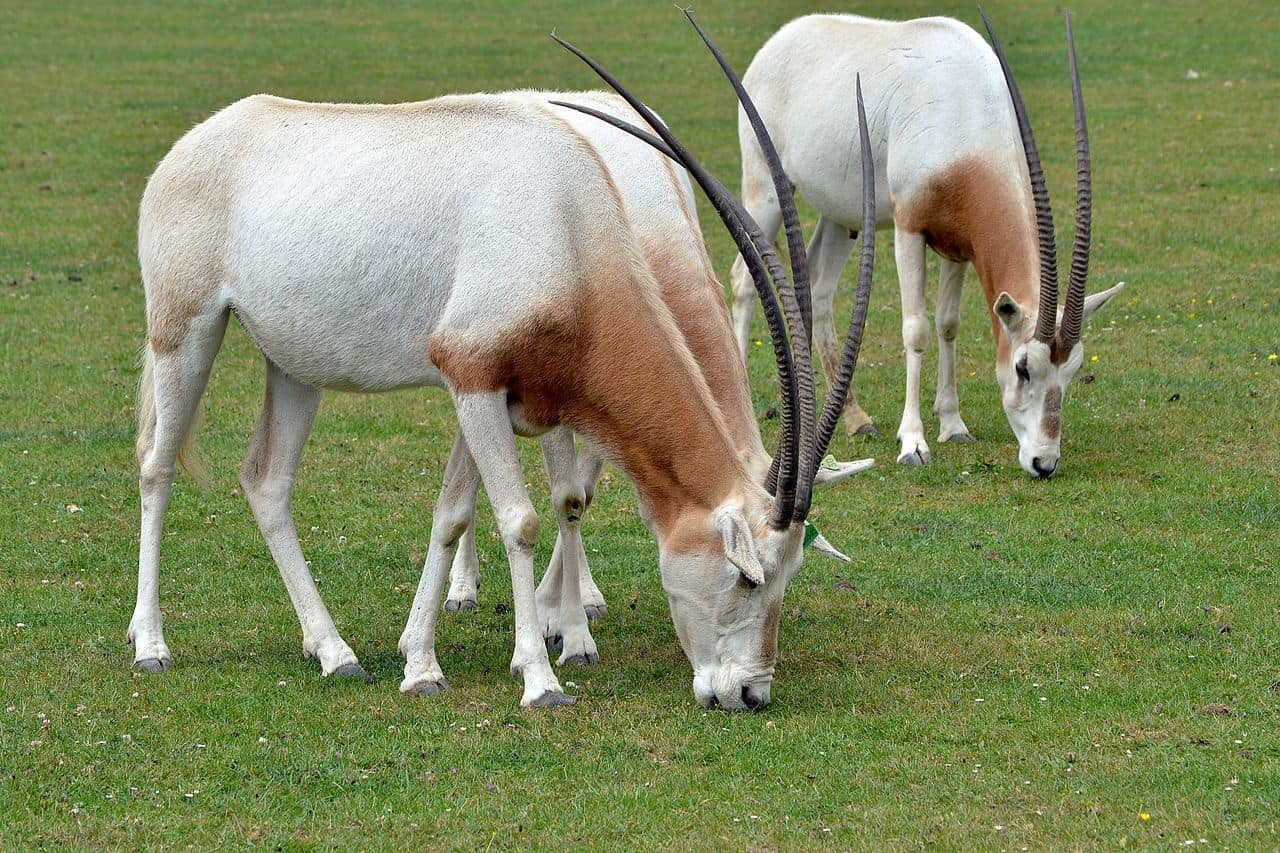
Commonly referred to as the North African buffalo, this right here may very well be one of the prettiest horned animals in the world and that’s mostly based around the fact that they are so sought after by most collectors out there.
While most definitely not of the same size as most other creatures on this list, the oryx is still a majestic looking creature that deserves its spot on this list simply because of how incredible their horns really look. They immediately stand out from the crowd and that’s a fact.
Nyala
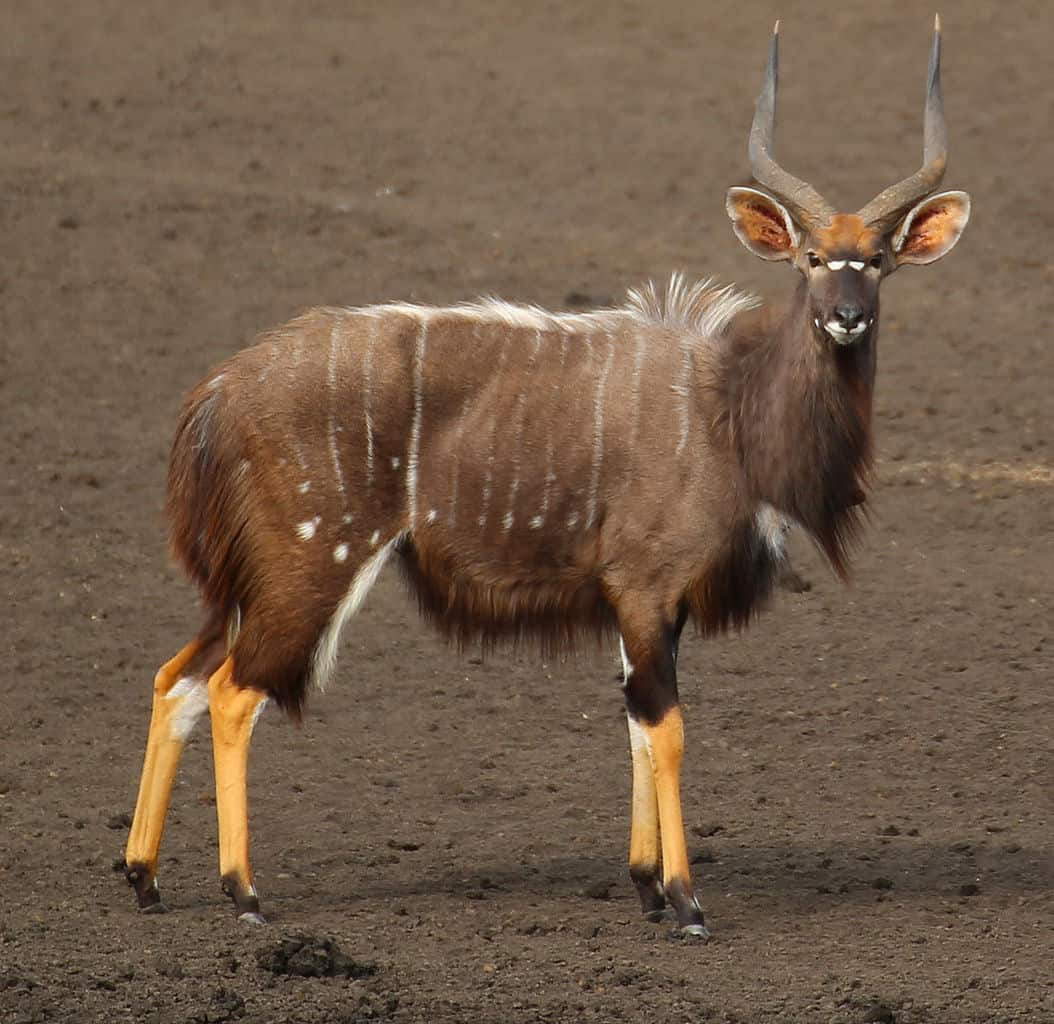
This is what we would commonly refer to as one of the most handsome creatures in the world, regardless of whether we’re talking about the males or the female counterparts of the species.
Overall, Nyala antelopes have a rather regal look to them that just makes them look like they’re not of the common crowd if you know what we mean.
On top of that they also have the advantage of looking completely different from their female counterparts, mainly through their darkish and shaggy looking coats that they wear all year round.
Bharal
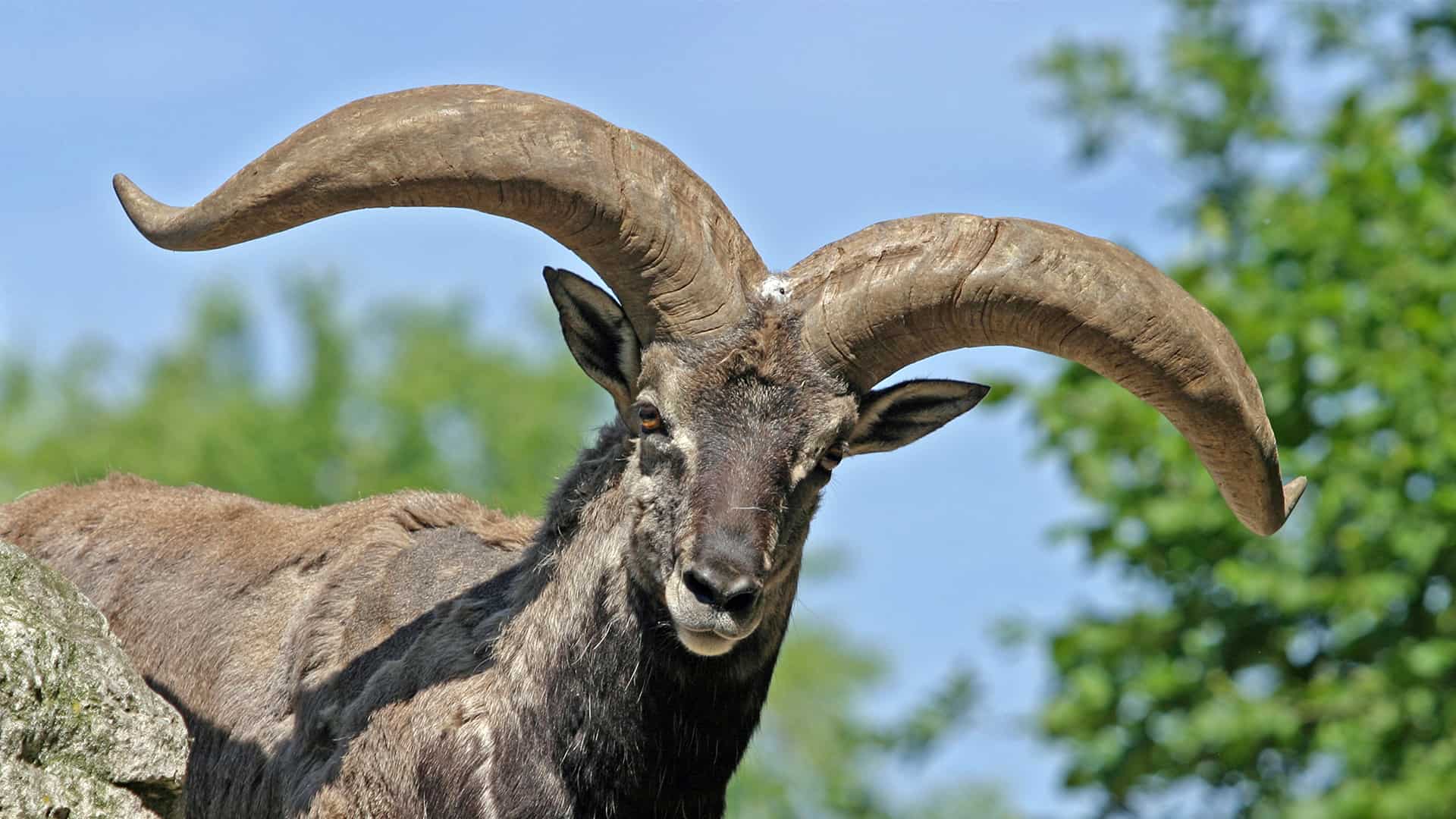
The Bharal, also commonly referred to as the Himalayan blue sheep, is quite a spectacle to look at and you can’t argue otherwise.
It is again another one of those creatures that just looks like they’re super proud of the horns they’re wearing at all times and it truly shows.
Despite their name however, they’re not actually blue, it’s all a trick of the light, but even discarding that incredible fact about them you still are left off with the incredible looking horns that are not just gorgeous to look at but also incredibly smooth to the touch.
Large Eland
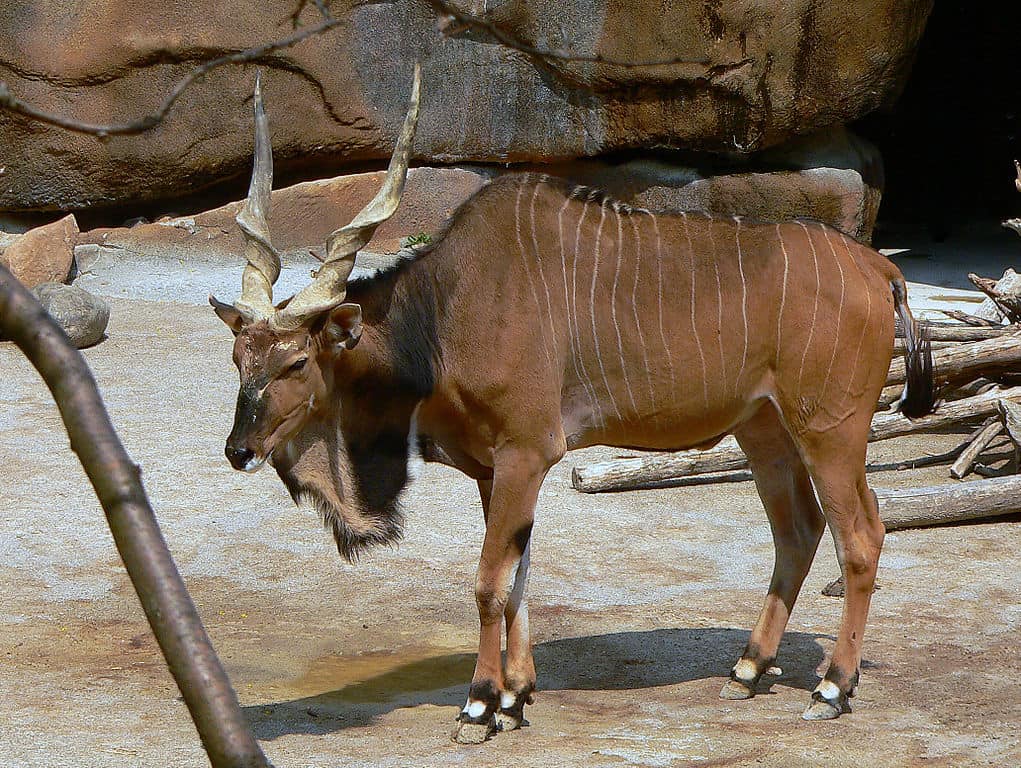
This right here is by far the largest antelope on the planet. If that wasn’t enough to get your attention then you should also take a gander at the fact that this is also one of the most aesthetic looking creatures on the planet as well.
Their incredible skin-beard factor is out of this world and let’s not forget about their horns too as they’re pretty much amongst the most unique ones you’ll ever see on this planet.
The swirls that they take are both practical and gorgeous to look at and on top of all of that they also straighten themselves out near the end which gives them an even more unique look.
Rhino

You already knew that the rhino was going to be on this list, and for good reason too. There are plenty of animals that didn’t make the list here but we absolutely could not forget about these massive hulking beasts.
We won’t delve too deep into why they are so amazing, all that we’re going to mention is the fact that they’ve literally been some of the most sought after around the globe, to the point where a lot of rhino species out there are currently endangered because of how much they’ve been hunted for their horns.
Conclusion
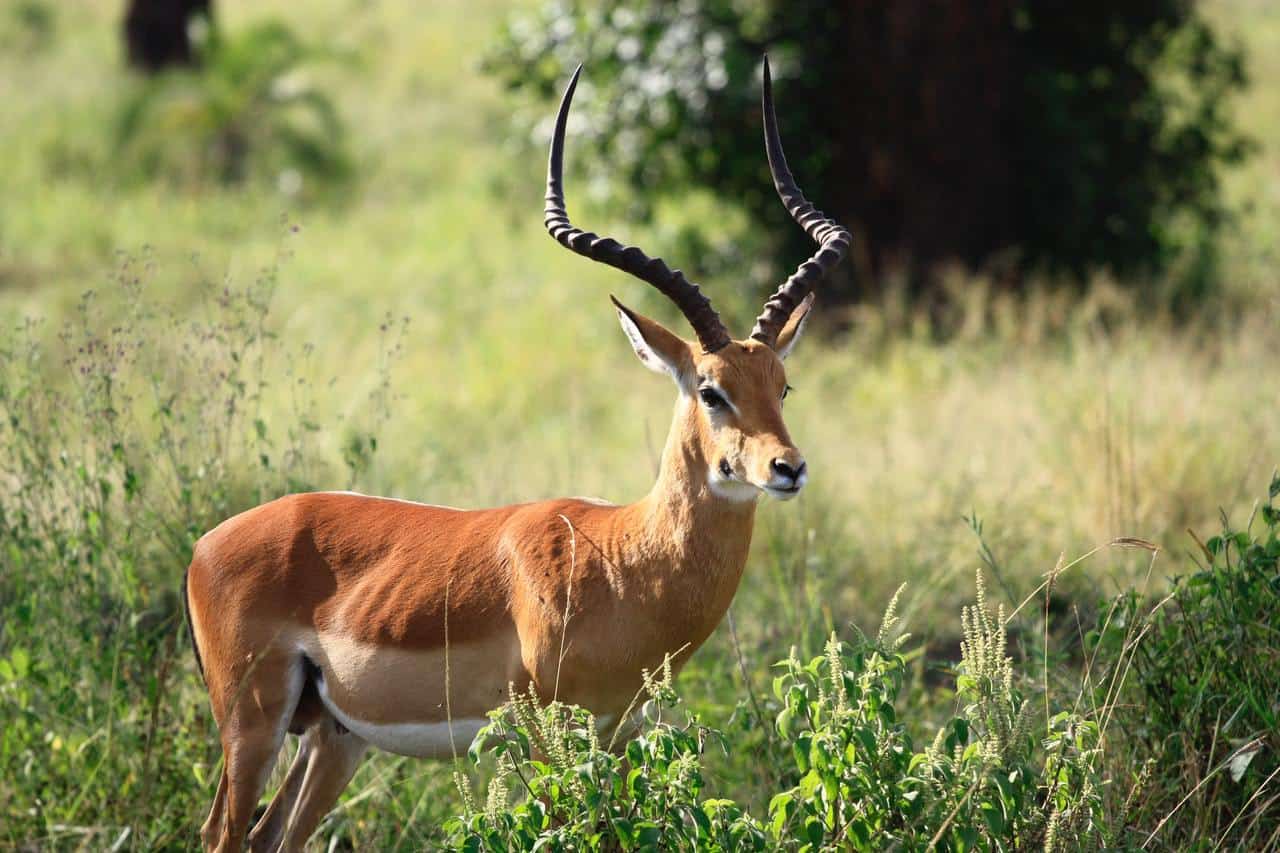
So, with that being said, we hope that this was a helpful enough guide for you and that we answered every question that you had for us. While we definitely left out a lot of animals from our list and a lot of fun facts, we tried to encompass the basics so as to make sure that you know everything there is to know about them.
There are hundreds of animals out there that have incredibly detailed horns but we personally believe these are the top of the line, best examples that deserve to be noted. Thank you for reading this far and we hope that now you know more than you did before about horned animals.

